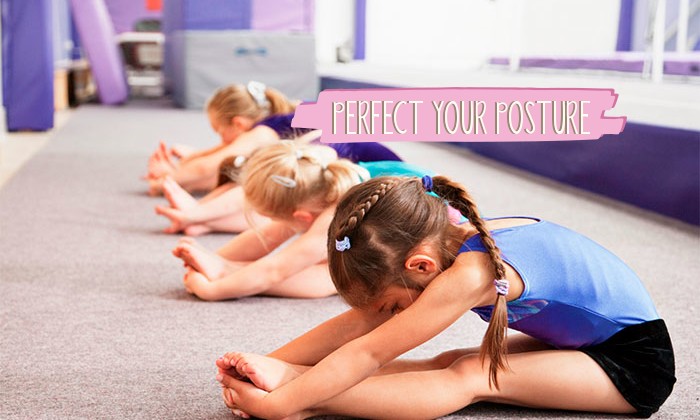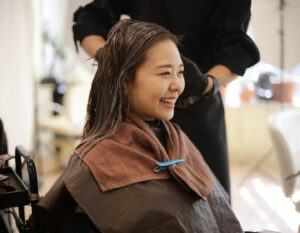
 Post Category - ParentingParenting - Post Category - Tweens & TeensTweens & Teens
Post Category - ParentingParenting - Post Category - Tweens & TeensTweens & Teens Post Category - Health & WellnessHealth & Wellness - Post Category - WellnessWellness
Post Category - Health & WellnessHealth & Wellness - Post Category - WellnessWellnessWays that you and your teen can improve posture for a fit and healthy lifestyle!
Ask the average desk-bound worker or student if they have neck or back pain, and the likelihood they will reply with a definite ‘yes’ is increasingly high. The American Academy of Pain Medicine reports as many as 100 million Americans experience chronic pain, with back pain being the highest, followed by neck and jaw pain. Osteopathy Australia reports as much as 80% of the population suffers from some type of back pain.
Even the Hong Kong Health Authority estimates that 80 per cent of adults in the city have experienced low back pain at least once in their lifetime. And it’s not just adults. Teenagers are increasingly suffering from severe aches and pains previously reported by those significantly older. The worst part is these problems magnify as they age, causing serious health problems that undoubtedly hamper health and lifestyle.
So why is this happening?
In a nutshell, poor posture and sedentary lifestyles. Back and neck pain can be caused by consistently poor posture, a condition often instigated by slouching at a desk for long periods, coupled with improper ergonomics of standard issue student desks and chairs. Add to this students’ heavy backpacks slung over one shoulder, and the poor spine and pelvis can’t cope with the weight bearing in an unstable position.
The good news is, poor posture can be improved and often corrected more easily than many think, particularly when intervention occurs in teenage bodies.
“The keys to recovery from low back pain are learning the proper ways and postures to carry out different tasks correctly, establishing habits in regular and appropriate exercise, and enhancing consciousness in self-management and health,” says the Hong Kong Health Authority.
Yet according to Flex Co-Director and Pilates instructor Heather Thomas Shalabi, a lot of teenagers and adults aren’t educated about correct posture and simple tools for correction.
“They are shocked at how small changes in lifestyle habits can make such a big change to their physical wellbeing and appearance,” she says.
“Of course, it makes a huge difference when you tell a teenager that you look slimmer, taller and healthier when you have good posture and manage your weight,” she says. “And then they eventually see it for themselves. This can change bad habits for a lifetime.”
She adds that, after identifying pain points and simple corrections – both physical exercise and changes to their seated environment (height of chair and table, angle of screen, position of wrists and arms when typing), many clients have reduced pain after just a day or two of concentrated self-correction.
“You really can self-correct by being mindful of one or two changes to focus on. Even a once daily self-check will put you in a better postural position. When you’re waiting in a queue or sitting for a meal, checking in and self-correcting can be the building bocks to better alignment and strength.”
What is “good” posture, anyway? Why is it important other than just to alleviate back pain?
Well, for one thing, good posture helps keeps your entire body functioning smoothly, and pain-free. Specifically, keeping your bones properly erect with correct muscle activation (“good posture”) will:
- Help you breathe better and take in more air – really important for sports and just every day life. By keeping your upper back straight, it helps to expand the ribs and lung capacity;
- Keep all your internal organs healthy by giving them proper space to function correctly; if your whole body is hunched over, important organs such as the liver, kidneys, stomach, heart & lungs as already mentioned, have less space in which to do their jobs;
- Prevent your skeleton from going out of alignment – such as scoliosis, which is a curvature of the spine, and can be extremely painful. This tends to get worse as we get older;
- Allow muscles to develop in their properly elongated position, making them stronger & more resilient. It will also allow joints to move freely, with less restriction; and
- Importantly, great posture helps people carry themselves with confidence and project a positive image!
With all these points in mind, it’s easy to see why great posture is important for everyone so let’s get started!
Master these key exercises and have better posture for life!
- Touch your toes: either seated or rolling down against the wall. This will stretch your back and hamstrings. Keep the spine long and straight whilst stretching, and breathe deeply to help your body stretch further.
- Goal Post Arms: against the wall. Pull in abdominals and ribcage whilst holding goal post position. Slide arms up overhead, and back down to goal post. This will stretch the shoulders, chest and back, and remind the body of good postural alignment.
- Squats: with a straight back. Either against the wall, or simply standing on the floor. This builds strength in the back and legs, and teaches the body how to sit down and get back up properly.
- Bridging. Lie on the floor with knees bent and roll the pelvis and back up until you are between the tips of the shoulders (not the neck). Keep your abdominals and ribs in, and feel yourself articulate the spine on the way up and down. This will wake up your back and strengthen your gluteals (bum muscles).
- Rollup: Lie on the floor with legs straight and arms stretched overhead. Imprint your spine strongly on the floor and reach through the arms to roll up and touch the toes. Keep pulling your navel in as you do this and try not to use momentum. This will strengthen your abdominals, wake up the spine and stretch the hamstrings and lower back.
- Swan: Lie face down on the floor with hands stacked under forehead. Lift the upper back and shoulders off the floor and hold. You can also do this with hands under your shoulders and push up, keeping the shoulders down and the abdominals lifted. This will strengthen the upper back and shoulders.
Try to do these exercises at least 3 times per week. Concentrate on your form as you do each one. It should take about 30-45 minutes to complete all six exercises. Good luck!
![]()
Flex will host Teen Open House on Saturday, 12 March with 30-minute free trial classes in Yoga, Pilates Allegro and Flying Pilates. Open House participants get a fabulous FlexTeens tank, and enjoy healthy drinks and nibbles, PLUS a complimentary FlexTeens class. Bookings essential! RSVP on 2813 2212 or [email protected].
 View All
View All











 View All
View All





 View All
View All


 View All
View All










